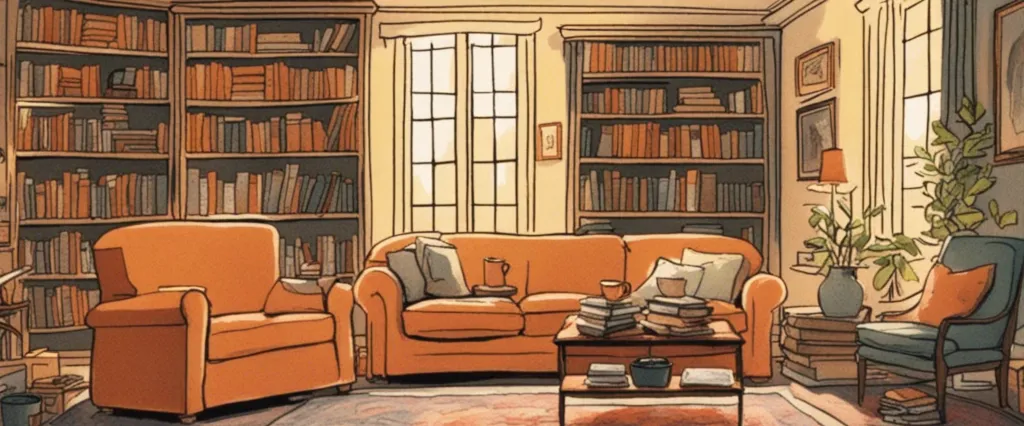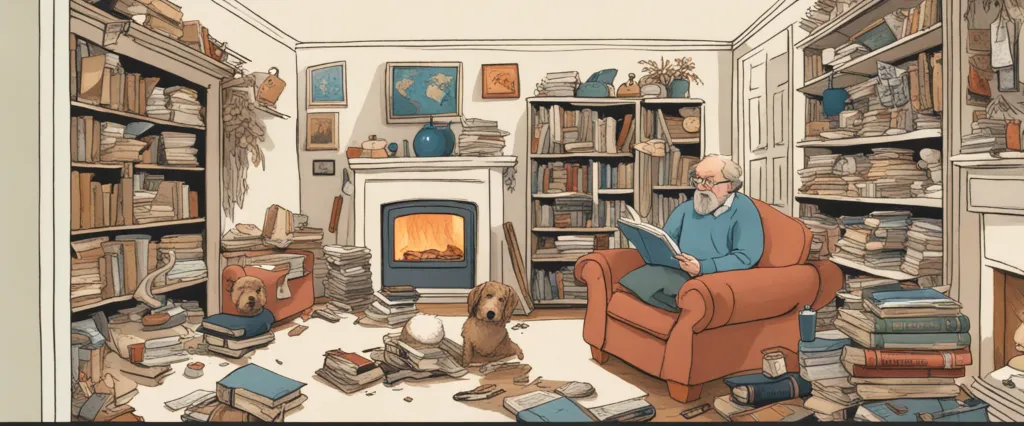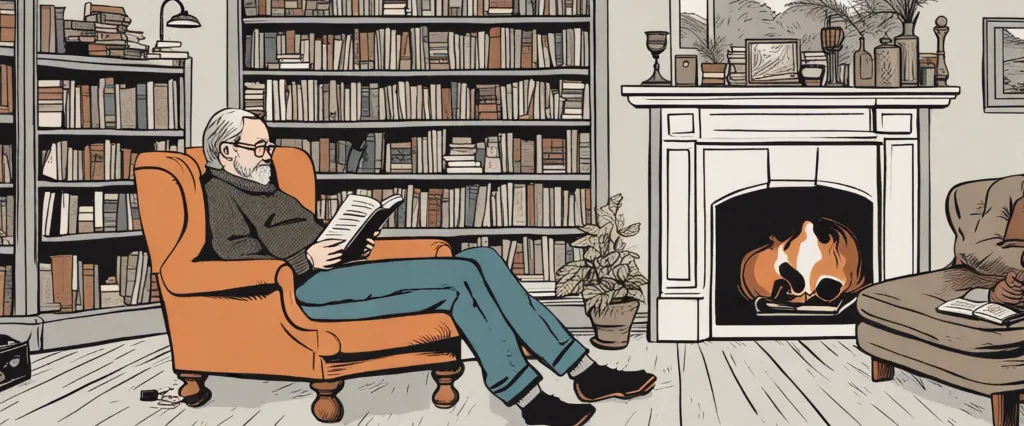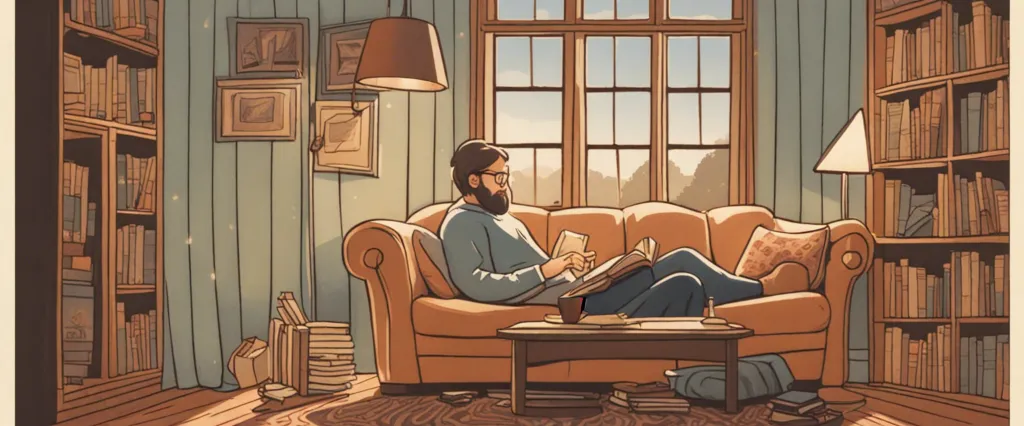
Books have always served as essential vessels that transport readers to different realms, capturing diverse facets of human history and culture. In their remarkable works, authors have delved into various subjects, unraveling hidden connections and offering profound insights into the world we inhabit. Bill Bryson’s “At Home” and Tom Standage’s “A History of the World in 6 Glasses” exemplify two distinct yet equally captivating approaches to exploring our collective past.
Through Bryson’s renowned wit and Standage’s compelling narratives, both authors illuminate different aspects of history, unearthing the untold stories lying within seemingly ordinary objects and experiences. “At Home” takes readers on a journey through the seemingly humble rooms of a house, connecting individual stories to the vast tapestry of human civilization. Conversely, “A History of the World in 6 Glasses” sheds light on the global impact of six beverages, leading us on a fascinating adventure through time and cultures.
Thesis Statement:
This comparative study seeks to analyze and contrast the distinctive methodologies employed by Bill Bryson in “At Home” and Tom Standage in “A History of the World in 6 Glasses” as they explore the complexities of the past. By examining the varied storytelling styles, choice of subjects, and overall thematic focus, this study aims to highlight the authors’ unique contributions to our understanding of history as a tangible and interconnected web of human experience.
Overview of the Study:
I. Background of the Authors
A. Bill Bryson
B. Tom Standage
II. Storytelling Methods
A. Bill Bryson’s engaging anecdotes
B. Tom Standage’s thematic approach
III. Choice of Subjects
A. Exploring domestic spaces in “At Home”
B. Delving into the global significance of beverages in “A History of the World in 6 Glasses”
IV. Thematic Focus
A. Cultural and historical dimensions of homes in “At Home”
B. Intersections of culture, trade, and society through beverages in “A History of the World in 6 Glasses”
V. Conclusion
A. Recap of the distinct approaches taken by Bryson and Standage
B. Reflection on the significance of their works in shaping our understanding of history
By immersing ourselves in the worlds crafted by Bryson and Standage, we embark on a dual journey through time, exploring the profound stories embedded within domestic spaces and the cultural significance of everyday beverages. By examining the manifold dimensions and narratives within these two exceptional books, we can recognize the intricate interplay between history and personal experiences that shape our world today.
Brief Summary of Two Books
At Home by Bill Bryson
At Home” by Bill Bryson is a captivating exploration of the history and significance of our everyday living spaces. The book takes readers on a tour through various rooms of Bryson’s own house, using each space as a jumping-off point to dive into the vast and intriguing history of domestic life.
Starting with the kitchen, Bryson delves into the origins of various household items we often take for granted. He explores the invention of the modern stove, refrigerator, and other kitchen gadgets, as well as the development of food preservation techniques and the impact of the Industrial Revolution on our eating habits.
Moving on to the bedroom, Bryson uncovers the evolution of our sleeping habits, the reasons behind the introduction of the four-poster bed, and the history of the mattress. He also explores the changing societal views on cleanliness and personal hygiene, and the unintended consequences of these changes.
The author then discusses the bathroom, examining the history of toilets, the development of plumbing systems, and the introduction of indoor plumbing. He further explores the cultural and social aspects of bathing, discussing public baths, the invention of the shower, and the rise of the modern bathroom.
Throughout the book, Bryson expands on a wide range of intriguing topics, including the origins of wallpaper, the history of clocks and timekeeping, the significance of gardens, and the impact of architecture on our lives.
Through engaging storytelling and meticulous research, Bryson seamlessly connects the dots between seemingly mundane household items and the grand historical events and societal shifts that shaped our modern homes. “At Home” offers readers an enlightening and entertaining journey through time, revealing the extraordinary stories hiding within our ordinary living spaces.
A History of the World in 6 Glasses by Tom Standage
“A History of the World in 6 Glasses” by Tom Standage is a nonfiction book that traces the influential role of six beverages throughout human history. Each drink represents a pivotal moment in the development of societies and explores the cultural, social, political, and economic impact that these drinks have had on human civilization.
The book begins by delving into the origins of beer in Mesopotamia, focusing on its significance in the settling of communities and the formation of agricultural societies. It explains how beer played a crucial role in the development of writing, law, and religion, as well as in the economies of ancient civilizations.
Moving towards ancient Greece and Rome, Standage examines the influence of wine and its ability to spread Greek culture across the Mediterranean. From the symposiums of Athens to the feasts of Rome, wine became a symbol of social status and a catalyst for social interactions, fostering the exchange of ideas and shaping the political landscape.
Continuing to explore the role of beverages in human history, the book highlights the importance of distilled spirits during the age of exploration. Standage illustrates how the invention of distillation and the rise of spirits such as rum, brandy, and whiskey fueled the exploration and colonization of the New World, and how the global trade of these beverages shaped economies, plantations, and slave labor.
The fourth drink, tea, represents the Industrial Revolution in Britain. Standage explores how the demand for tea created complex global trade networks, contributed to the growth of the British Empire, and impacted social habits, transforming tea into a symbol of British identity and a catalyst for social change.
The fifth beverage, coffee, chronicles its influence during the Age of Enlightenment. Standage explains how coffee houses became epicenters of intellectual exchange, giving birth to new ideas and philosophies that would shape the course of history. The French Revolution, scientific achievements, and the birth of newspapers all have connections to the social dynamics surrounding coffee consumption.
Lastly, Standage discusses the modern-day dominance of Coca-Cola and the rise of soft drinks. He highlights the representation of modern American consumerism, the influence of advertising, and the global impact of sugary drinks, examining the cultural significance and controversies surrounding their consumption.
Overall, “A History of the World in 6 Glasses” offers an engaging exploration of the intertwined relationship between these beverages and the evolution of human civilization, serving as a captivating lens through which to view world history.
Comparison between Two Books

Similarities in Cultural History
Both At Home by Bill Bryson and A History of the World in 6 Glasses by Tom Standage delve into cultural history by exploring different aspects of human life and how it has evolved over time. Here are some similarities in terms of cultural history depicted in both books:
1. Domestic Life: Both books emphasize the significance of domestic life and how it reflects the cultural values and practices of a society. Bryson explores various rooms and objects within a typical home, highlighting their historical significance and how they have shaped everyday life. Standage focuses on the drinks consumed by civilizations throughout history, showing how they reflect social norms, rituals, and customs related to hospitality and domesticity.
2. Material Culture: Both authors examine material culture as a way to understand the past. They discuss the origins and changes in various objects, tools, and commodities used in different eras, shedding light on the technological advancements, trade networks, and societal shifts that shaped cultural practices and preferences.
3. Economic Systems: Both books touch upon the economic systems and trade patterns that influenced cultural history. They discuss the impact of resource availability, exploration, and globalization on the development and spread of certain cultural practices, such as tea drinking or the use of certain building materials.
4. Social and Status Symbols: Through their respective lenses, both authors explore how cultural history is intertwined with social and status symbols. Bryson analyzes the various rooms in a house and how their designs, furniture, and decorations were used to showcase wealth, taste, and social status. Standage examines how the consumption of particular drinks became associated with power and prestige, such as wine in ancient Rome or coffeehouses in 17th-century Europe.
5. Traditions and Rituals: The books highlight the importance of traditions, rituals, and cultural practices in shaping societies. Bryson discusses the evolution of customs related to home life, such as marriage ceremonies, religious observances, and holiday traditions. Standage explores the role of drinks in rituals and ceremonies, such as the use of beer in religious practices or the significance of toasting during social gatherings.
Overall, both At Home and A History of the World in 6 Glasses provide a cultural-historical perspective by examining various aspects of human life and illustrating the interplay between material culture, economic systems, social structures, and traditions.
Divergences in Cultural History
At first glance, both “At Home” by Bill Bryson and “A History of the World in 6 Glasses” by Tom Standage may seem like entirely different books with distinct focuses. However, upon closer examination, it becomes clear that both authors share a common interest in cultural history and explore it in their respective works.
In “At Home,” Bill Bryson takes readers on a journey through his own house, examining the history of various rooms and the objects within them. Through this intimate exploration, Bryson uncovers the fascinating historical origins of everyday items, delving into their social, economic, and cultural significance. He reveals how the development of each item connects to broader themes in cultural history, such as the evolution of social classes, the impact of technological advancements, and changes in societal norms. By dissecting his own home, Bryson intertwines personal anecdotes with historical research, providing readers with a vivid portrayal of the past through the lens of daily life.
On the other hand, “A History of the World in 6 Glasses” by Tom Standage examines the impact of six key beverages – beer, wine, spirits, coffee, tea, and cola – on human civilization throughout history. Standage argues that these beverages played a crucial role in shaping cultural, economic, and political developments. By tracing the transformative power of these drinks, Standage highlights how they influenced social behavior, economic systems, and even political revolutions. His book explores diverse cultures across different time periods, linking their preferences, customs, and attitudes towards beverages to broader historical events and shifts in societies’ values.
While both books have their unique approaches, they share a common divergence in their focus on cultural history. With “At Home,” Bryson centers his exploration around the objects within his house to reveal how they are woven into the fabric of historical change. By contrast, Standage uses beverages as a lens to examine cultural history, uncovering the ways in which drinks have shaped societies and their values. Although their approaches differ, both authors ultimately shed light on how material culture and consumption reflect and influence the values, behaviors, and social structures of civilizations throughout history.
In conclusion, both “At Home” and “A History of the World in 6 Glasses” use distinct approaches to delve into cultural history. While Bill Bryson explores the history of everyday objects within his own home to uncover broader historical themes, Tom Standage analyzes the impact of beverages on societies across time. Ultimately, these books offer readers a deeper understanding of how material culture and consumption are intertwined with cultural history and how they have shaped human civilization.

Conclusion
Both “At Home” by Bill Bryson and “A History of the World in 6 Glasses” by Tom Standage are highly regarded and engaging books.
“At Home” takes readers on a fascinating journey through the history of domestic life, exploring various rooms in Bryson’s own house and examining the stories behind everyday objects we often take for granted. Bryson’s witty writing style and ability to blend historical facts with personal anecdotes make this book a delightful and eye-opening read.
“A History of the World in 6 Glasses” explores the role that six beverages (beer, wine, spirits, coffee, tea, and cola) have played in shaping human history. Standage brilliantly connects these drinks to significant social, cultural, and economic events, providing a unique perspective on world history. The book is well-researched and thought-provoking, offering valuable insights into how beverages have influenced societies throughout time.
Both books have received critical acclaim and are highly recommended for those interested in history, culture, and the interconnections between everyday life and larger historical narratives. Ultimately, the choice of which book to read depends on one’s personal preferences and interests.



